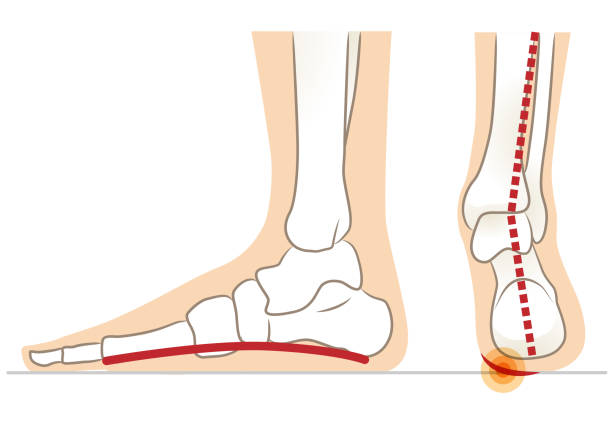
Flat Feet: 6 Essential Tips to Treat and Relieve Discomfort
Share
Introduction:
Flat feet, also known as fallen arches, can cause discomfort and pain, affecting your daily activities and overall quality of life. While flat feet are a common condition, there are effective ways to manage and treat them. In this article, we'll explore six essential tips to help you alleviate discomfort and improve foot health.
1. Wear Supportive Footwear:
Choosing the right footwear is crucial for individuals with flat feet. Opt for shoes with good arch support and cushioning to help distribute pressure evenly across your feet. Look for shoes specifically designed for flat feet or those with built-in arch support inserts. Avoid high heels and shoes with minimal arch support, as they can exacerbate foot pain.
2. Use Orthotic Inserts:
Orthotic inserts, also known as shoe inserts or insoles, can provide additional support and stability for flat feet. These inserts are available over-the-counter or can be custom-made to fit your feet perfectly. Orthotic inserts help to correct foot alignment, reduce strain on the arches, and alleviate pain associated with flat feet. Consult with a podiatrist to determine the best type of orthotic inserts for your specific needs.
3. Perform Foot-Strengthening Exercises:
Strengthening the muscles in your feet and ankles can help improve foot function and reduce discomfort caused by flat feet. Simple exercises like toe curls, arch lifts, and calf stretches can help strengthen the muscles that support the arches of your feet. Incorporate these exercises into your daily routine to gradually build strength and stability in your feet.
4. Maintain a Healthy Weight:
Excess body weight can put additional strain on your feet and exacerbate flat foot symptoms. Maintaining a healthy weight through a balanced diet and regular exercise can help reduce pressure on your feet and alleviate discomfort. Losing even a small amount of weight can make a significant difference in relieving foot pain and improving overall foot health.
5. Practice Proper Foot Care:
Taking care of your feet is essential for managing flat feet and preventing complications. Wash your feet daily, thoroughly dry them, and moisturize to prevent dryness and cracking. Trim your toenails regularly and wear clean, dry socks to reduce the risk of fungal infections. Additionally, inspect your feet regularly for any signs of irritation, blisters, or sores, and seek medical attention if you notice any abnormalities.
6. Seek Professional Treatment:
If you're experiencing persistent foot pain or discomfort despite trying conservative treatments, it's essential to seek professional help. A podiatrist or orthopedic specialist can assess your condition, provide a proper diagnosis, and recommend appropriate treatment options. Depending on the severity of your flat feet, treatment may include physical therapy, corticosteroid injections, or in some cases, surgery to correct foot deformities.
Conclusion:
Living with flat feet doesn't have to mean living with constant pain and discomfort. By following these six essential tips, you can effectively manage flat feet and improve foot health. Remember to wear supportive footwear, use orthotic inserts, perform foot-strengthening exercises, maintain a healthy weight, practice proper foot care, and seek professional treatment when needed. With the right care and attention, you can find relief from flat foot symptoms and enjoy an active, pain-free lifestyle.
